Kimono Inspired Dress: Drafting the Pattern
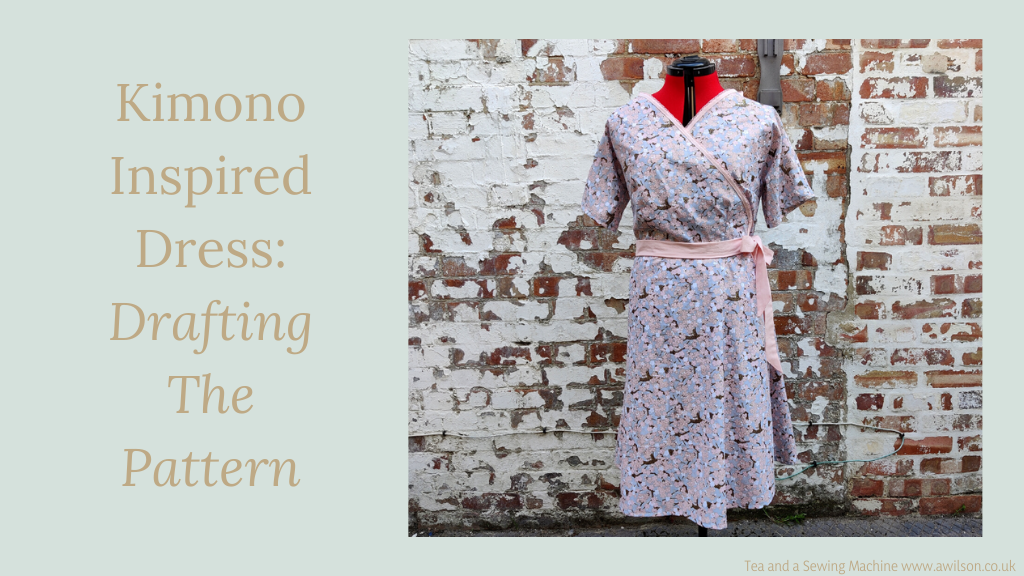
One of the reasons why I like to make things from my own patterns is because I can make them exactly as I want them.
I’m not relying on finding a pattern that looks identical to what’s in my head. Instead I can figure out a way to turn the pictures my head into something I can wear!
One of the first things I made without a pattern was a wrap dress. It was a long time ago now, and it wasn’t perfect by any means. In fact, the reason why there is a flower at the waist is because I needed something to hide a messy area!
Nonetheless I was pleased with the outcome and I felt that my little experiment was a success. I wanted to see whether I could make a wrap dress without a pattern, and I did.
I’ve come a long way since then! The main things I’ve learnt from this is that yes, it’s possible to make clothes from your own measurements without being trained how to by an expert (like lots of things actually!), and yes, there will be mistakes along the way, but learning and getting better is more important than being perfect right from the outset.
So 7 years on and here’s another wrap dress!
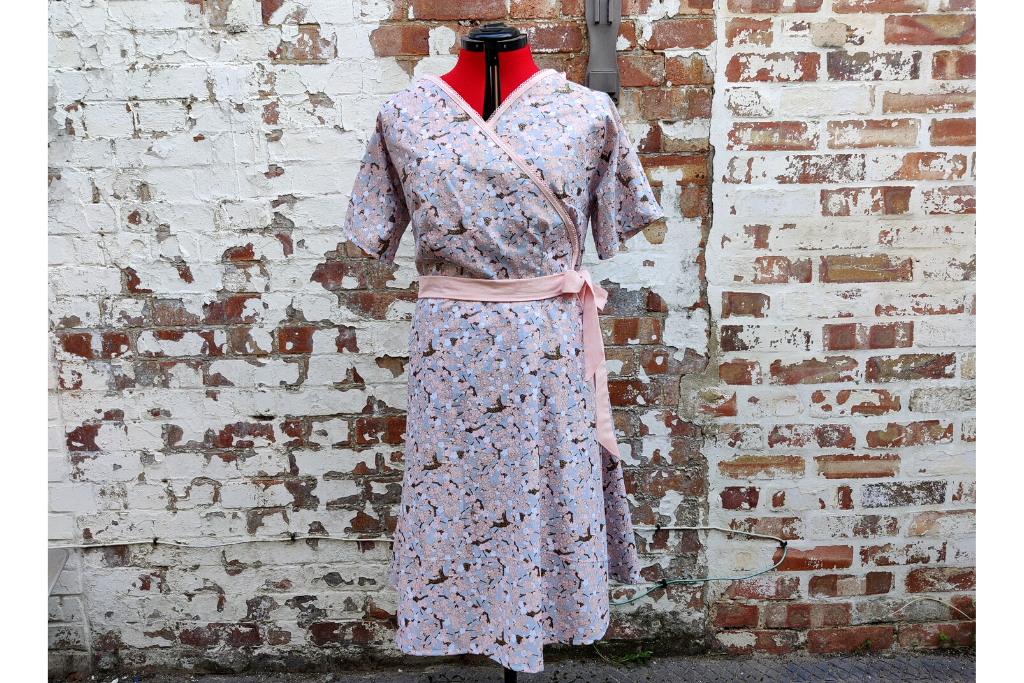
I’ve called it a kimono inspired dress, because that’s what I was aiming for when I was designing it.
We actually had plans to go to Japan last year. The trip was all booked, then the pandemic hit and we couldn’t go. Now things are showing signs of easing, we’ve started rebooking for next Easter.
I’m already starting to feel a tiny bit excited! It’s somewhere I’ve really wanted to visit for a long time, and I especially wanted to go in the spring.
So that’s I’ve made this kimono inspired dress from beautiful cherry blossom fabric from The Fabric Guys.
I didn’t want to make an actual kimono as I’m not entirely sure about how or why Japanese people wear them, and having no Japanese heritage, I didn’t want to take something I had no right to and misuse it.
I’ve tried to keep things simple (I’m less likely to get into a muddle that way!).
The dress is shaped but on the loose side, with a belt sash thing.
I was going to finish the raw edges with the same pink fabric as the belt, but I changed my mind at the last minute and decided to make things easier for myself and use bias binding instead.
Just to warn you, as there often is with drafting your own patterns in this way, there is some trial and error involved. So if you’re up for a sewing adventure, let’s get started!
Before You Start
To draft the pattern for the kimono inspired dress, you will need:
Your measurements. If you don’t already have them jotted down somewhere, as a minimum you will need to know the distance from your shoulder to just above your elbow, your shoulder to your waist, around your hips and from your waist to just below your knee.
A bodice block. If you have one already, you can use that. If not, you can either draft one (there are instructions here), or an easier alternative is to use a loose ish fitting t shirt.
A skirt block is also useful, but again if you don’t have one, I’ll walk through drafting one when we get to that stage.
You will also need:
Pattern paper (I prefer the sort with the grids on. Dots would also work)
A pencil
A ruler
A French curve is useful but not essential.
Drafting the Bodice
The bodice of the kimono inspired dress is in 3 pieces: one back piece and 2 front sections that cross over. The sleeves are cut as part of the bodice.
The back is easiest so we’ll start there, then use the back as a starting point for the front pieces.
Drafting the bodice is much easier if you have a bodice block already. There are instructions here if you don’t already have one. Although this means that things will take a bit longer, if you look after your bodice block, next time you want to make a dress from your own measurements, you’ll have a head start!
If you are short on time or if you don’t want to do this, you could use a loose ish t shirt as a template instead. I’d recommend folding it in half so that you pattern piece is symmetrical.
Bodice Back
Lay a piece of pattern paper over your bodice back block (or t shirt), and trace the neckline and shoulder. Mark where the bottom of the armhole is and where the waist is. From the bottom of the armhole, draw a vertical line downwards to the waist.
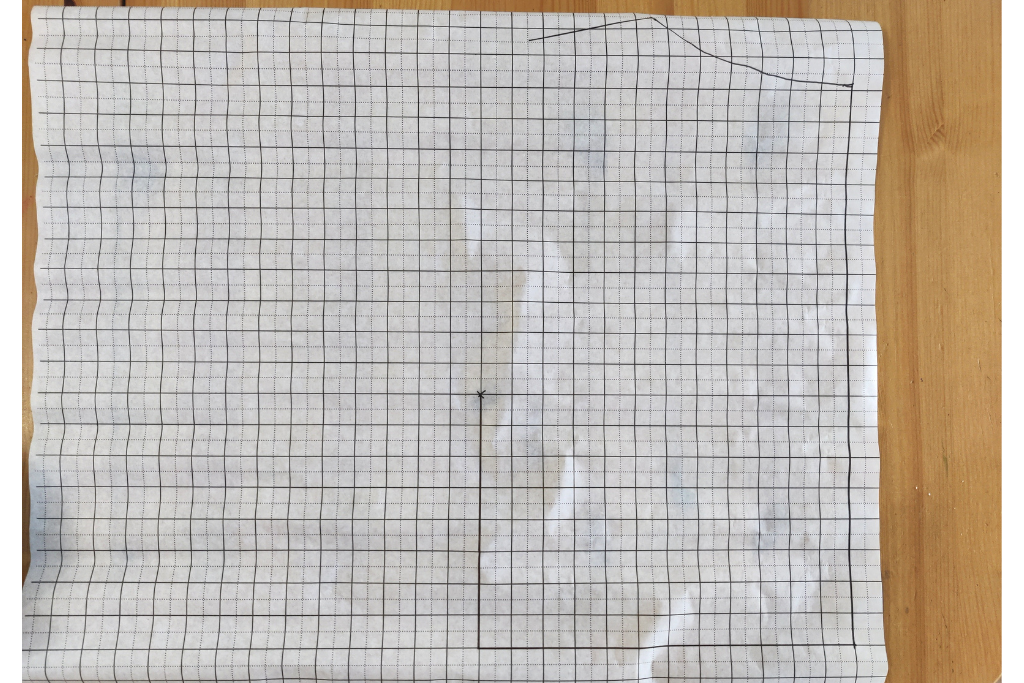
Decide how long you want the sleeves to be by measuring from your shoulder to just above your elbow. Continue the shoulder line by this amount.
From the armhole point, draw a line the same length minus 3 cm, at the same angle.
Join these two lines up to make the elbow end of the sleeve.

Adding some darts at the waist will give the kimono inspired dress some shape, but it’s up to you. I added mine to the pattern piece, but you might prefer to cut it out the pattern piece and then add the darts by pinning it to yourself or a dress form and putting them where they need to go. It’s difficult to do this as it’s round the back, so it can be useful at this stage if you have a kind friend or a helpful husband.
To add the darts to the pattern piece, mark 3rds along the waistline. On the third nearest the centre, draw a vertical line 10 cm (4 inches) long. Mark off 1.5 cm (5/8 inch) on either side on the waist line. Draw from the top of the line to these points.
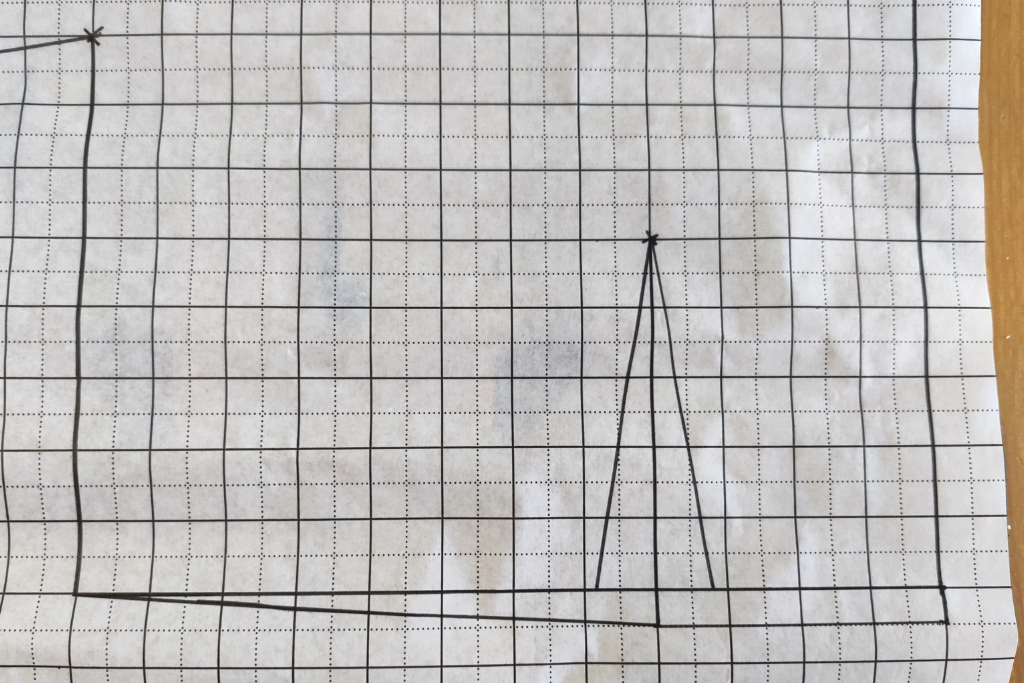
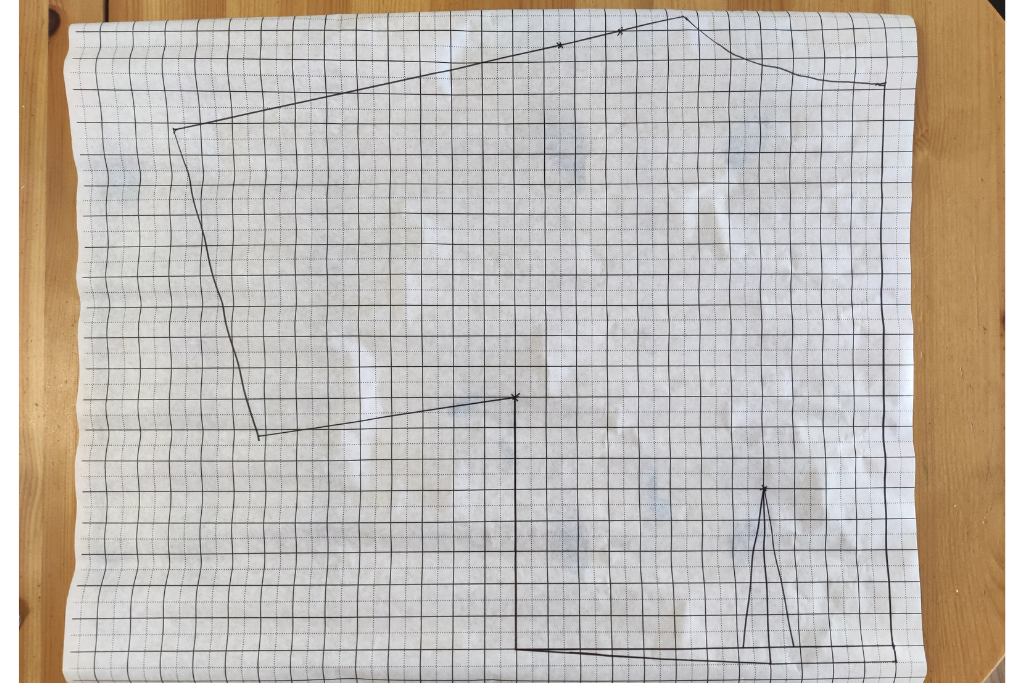
Bodice Front
The bodice front of the kimono inspired dress is a little bit more complicated. This is one of the reasons for starting with the back!
As the bodice back is symmetrical it was only necessary to draw half of it because both halves are the same, and it can be cut on folded fabric.
The bodice front on the other hand is not symmetrical, so the whole piece will need to be drawn.
Take your bodice back. On to another piece of pattern paper, trace the entire sleeve from the shoulder, the side and the waist. Draw the other half of the waist line, but don’t worry about the rest.
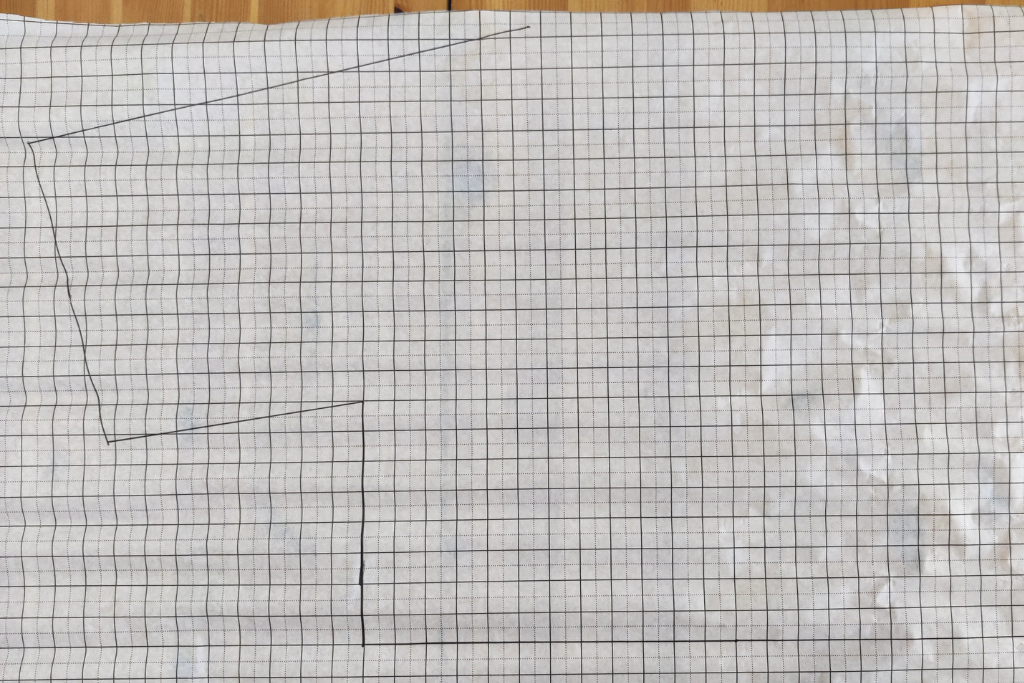
Extend the waist downwards by 5 cm (2 inches).
At the far end of the waist line, draw a 6 cm (2 1/4 inch) line upwards. Join the top of this line to the shoulder.
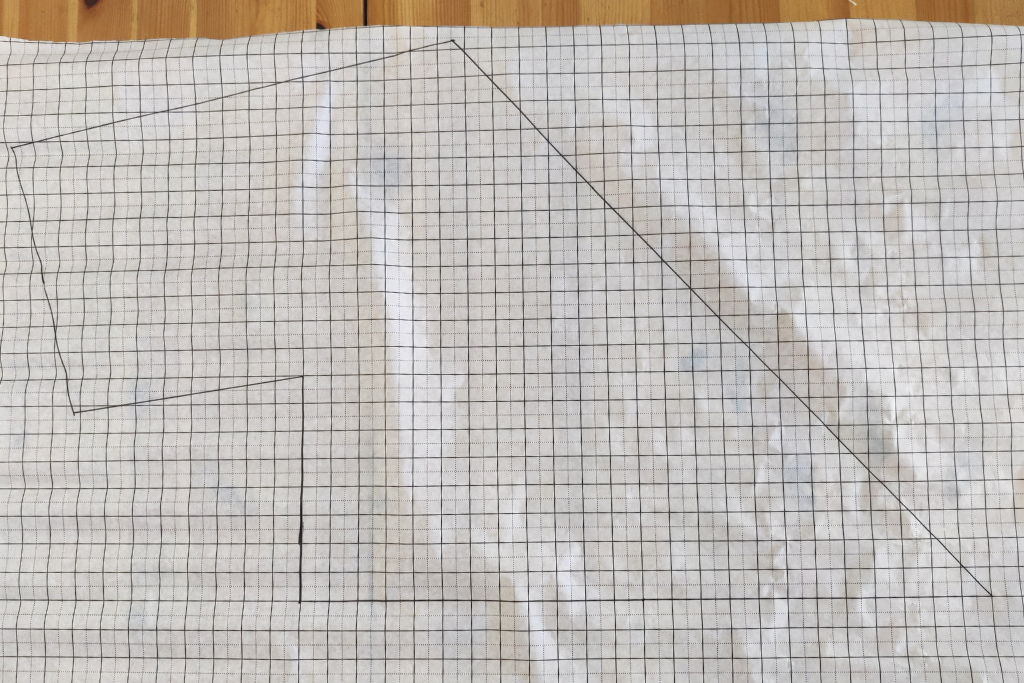
To add the waist darts, they will need to go at about a third and 2 thirds of the way along, but please check on yourself! The beauty of making clothes from your own measurements is that you can make clothes that fit you not squeeze yourself into things designed for somebody whose body shape is entirely different.
The waist darts will probably need to be about 10 cm (4 inches) long, and 3 cm (2 1/4 inches) wide, but it will depend on your dimensions so please check!
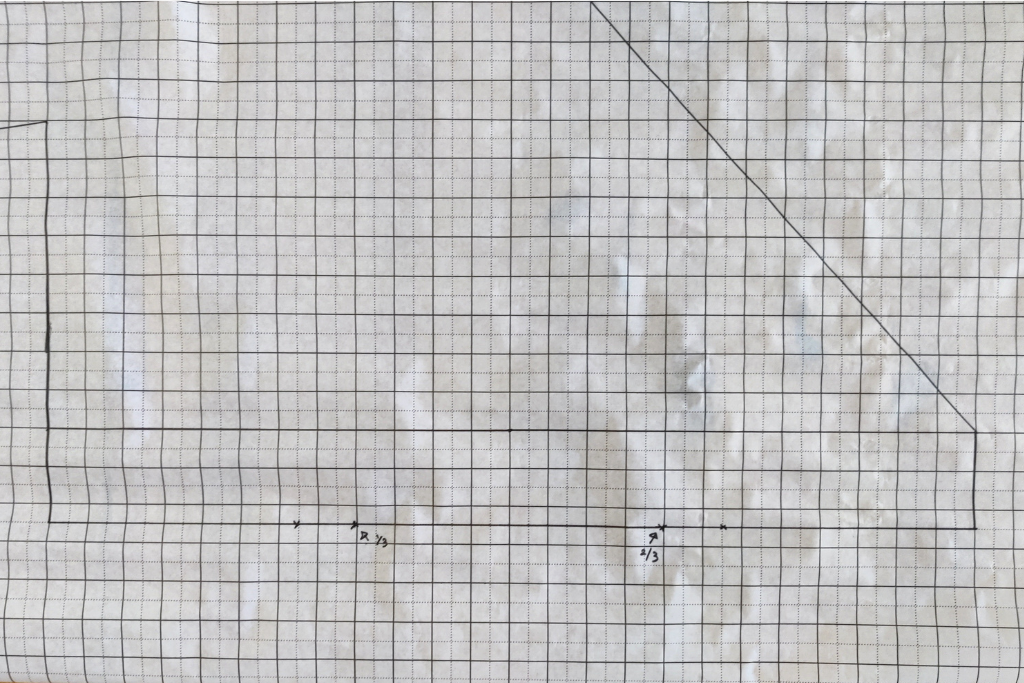
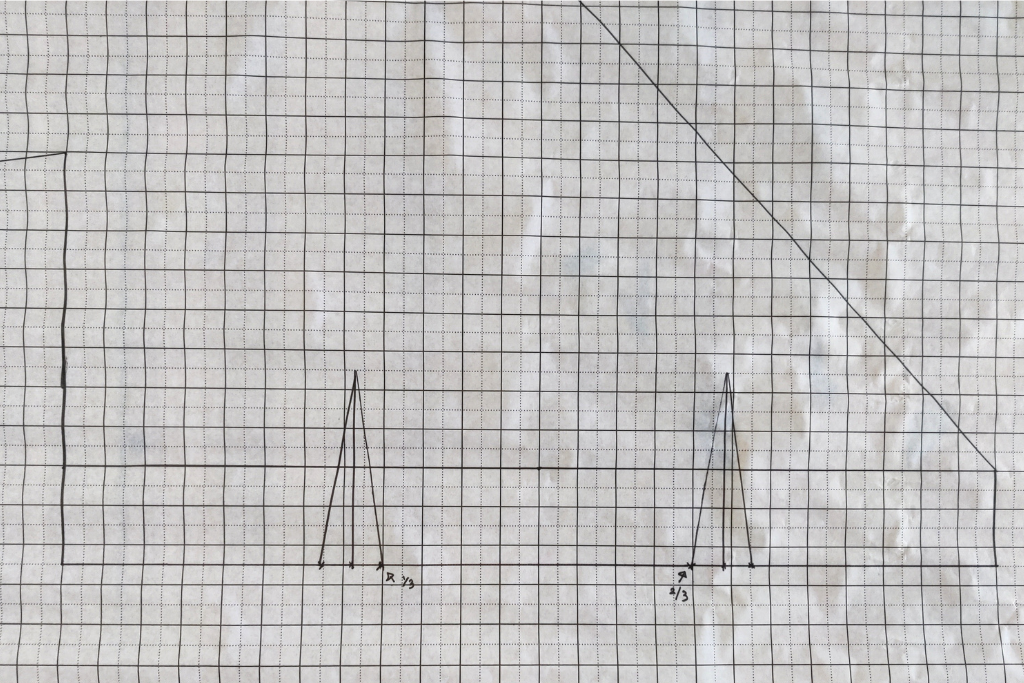
From the bottom of the side, measure up 2 cm and draw from here to the centre line of the waist dart. Do the same on the other side.
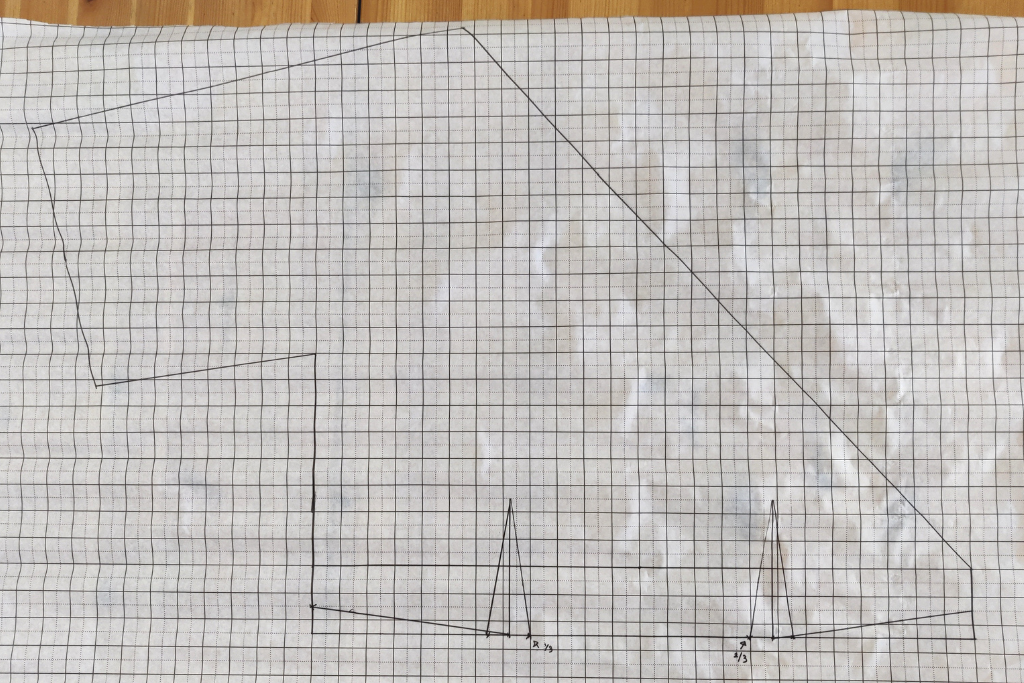
The bust dart should be about 6-8 cm (2 1/4 – 3 inches) down from the armhole and go upwards. The point of the dart on mine was 3 cm higher than the centre of the wide end.
The length of the dart was 12 cm (4 1/2 inches) long and 3 cm wide.
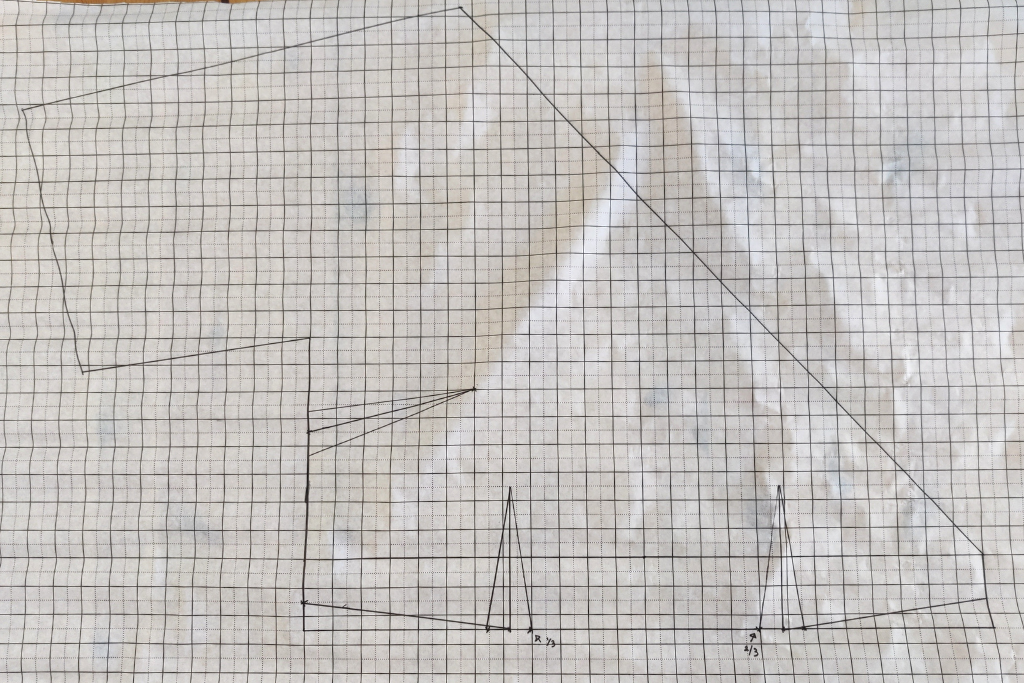
To compensate for the fabric taken up by the darts, extend the centre line of the bust dart by 1 cm (1/4 inch), then join this to the armhole point. On the side, measure down 1.5 cm (i.e. half the width of the dart), and join the centre of the dart to the side at this point.
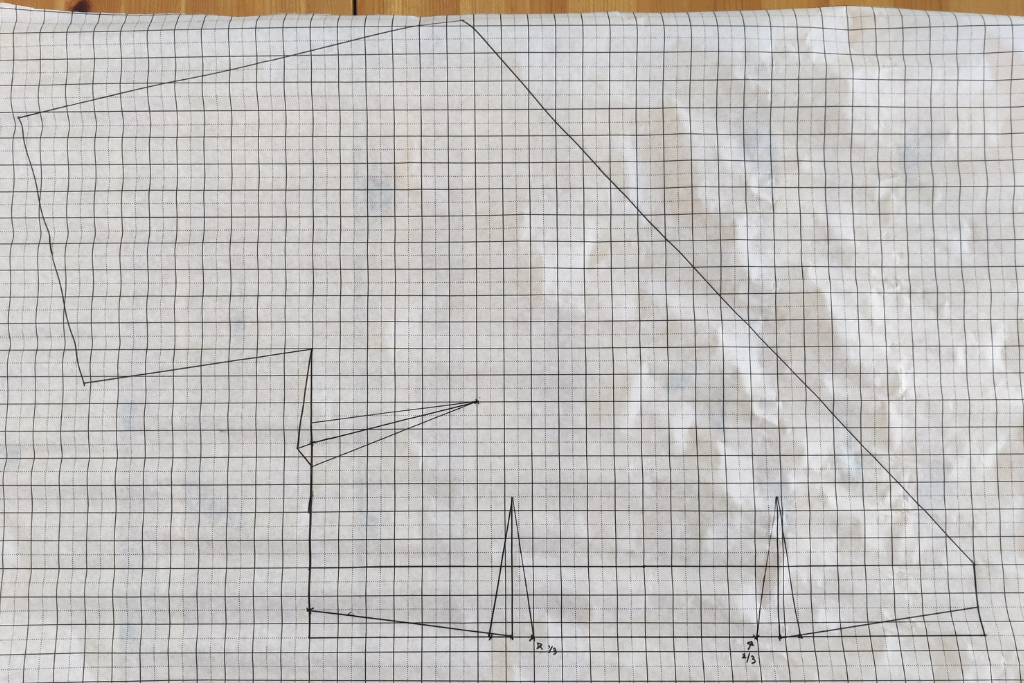
Drafting the Skirt
You’ll be pleased to know that drafting the bodice front of the kimono inspired dress is the trickiest part! The skirt is much easier.
If you have an A line skirt pattern already, you can use that. All you’ll have to do is adjust the waist so that it is the same size as the waist on your bodice.
If you need to draft the skirt, this is how to do it.
You will need 3 measurements: the length that you want the skirt to be, your hips and a waist measurement. For the waist measurement, use the waist of your bodice pieces, not your actual waist. Don’t forget that the back is only half and you’ll lose some with the darts!
So measure the waist of your bodice back pattern piece, subtract the width of the dart and double it. Then measure the waist of your bodice front piece and subtract the width of both the darts. Then add the back and the front measurements together.
Now draw a rectangle on pattern paper that is a quarter of your hip measurement plus a couple of cm, by your desired skirt length.
Divide your waist measurement by 4 (remember this is the waist of the dress, which will probably be more that your actual waist measurement). Calculate the difference between the waist measurement divided by 4, and the hip measurement divided by 4. This number is how much you will need to lose from the waist, and the way to do that is by cutting a triangle out of the waist.
Find the half way point along the short edge at the top. Draw a line downwards 10 cm (4 inches) long. Have you still got that number that was the difference between hips and waist? That needs to make the wide end of the triangle, which will be at the waist. So if the difference was 5 cm, mark 2.5 cm either side of the line and draw these points up to the other end of the line.
Now draw a line from hem edge to the pointy end of the triangle.
Grab a pair of scissors and cut out the triangle. Now cut along the line almost to the point of the triangle. If your pattern piece ends up in 2 parts, don’t worry, it’s just that it’s slightly easier if it’s still in one piece.

Push the sides of the triangle together and stick them with tape.
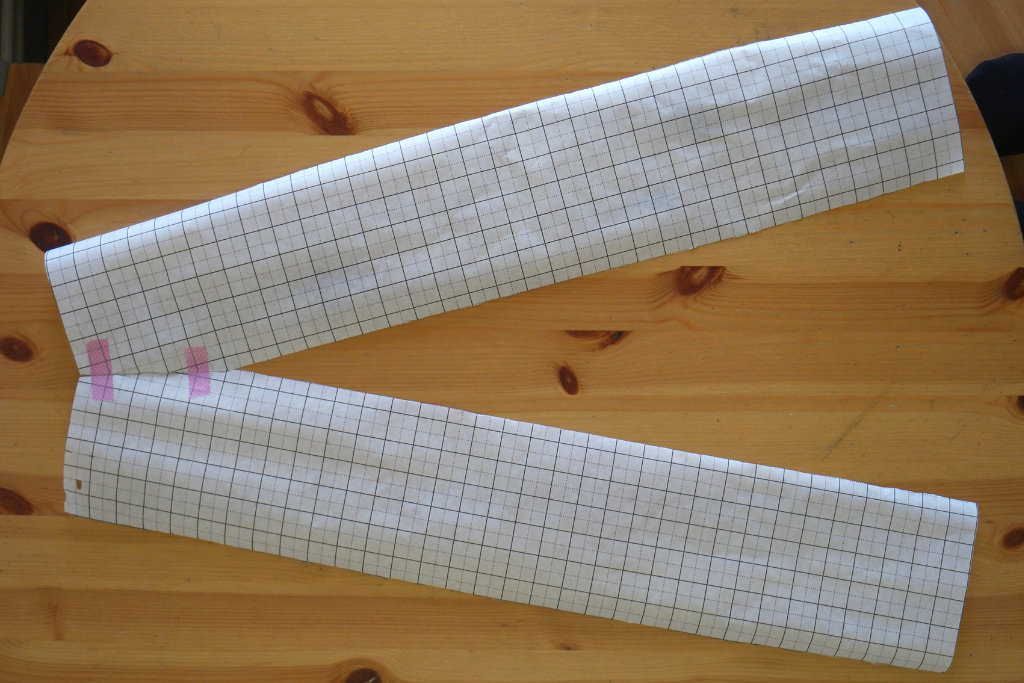
Draw round this onto another piece of pattern paper. You might like to add a gentle curve to the waist and the hem. A French curve is good for this, but if you don’t have one you could use a plate instead.
Almost There!
You’ll need to add a seam allowance to your pattern pieces.
On the bodice, add 2 cm to the shoulders, sleeve hem, sides and waist. Don’t worry about the neckline or the other raw edges. You’ll be finishing those with bias binding.
On the skirt, add 2 cm to the waist, hem, and side seam.
It’s a good idea to write on your pattern pieces that you have added a seam allowance and by how much. This will be useful if you find your pattern in a year or 2 and decide that you want to make another one!
On the skirt piece indicate the edge that will need to be on the fold when you cut it out.
Tips
Drafting a pattern yourself from your own measurements does involve some trial and error. So don’t be surprised if you need to adapt it.
Don’t be afraid to make changes if you want to. We are not following other people’s rules here, we are doing our own thing!
Including a generous seam allowance means that you have a bit extra if things turn out to be a bit small.
It’s a good idea to make a toile so you can make changes if you need to before cutting into your fabric. Toiles are traditionally made from muslin. but I normally use cheapy polycotton.
The next post will explain how to make the dress up, so once you are ready, you could start deciding which fabric to use. You’ll need 3-4 metres of cotton or polycotton, a small amount in a contrasting fabric for the belt (or you could use the same as for the dress), 3 metres of bias binding and a couple of buttons.
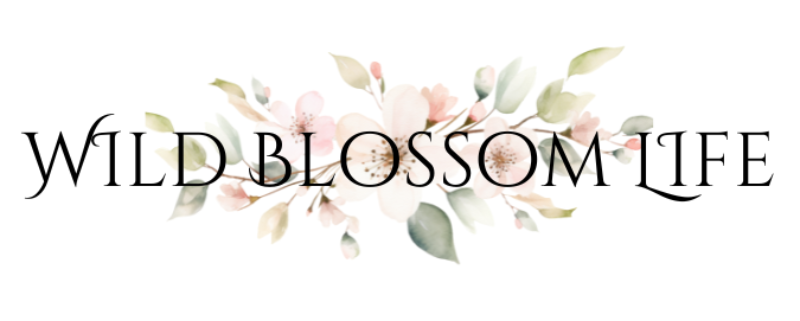
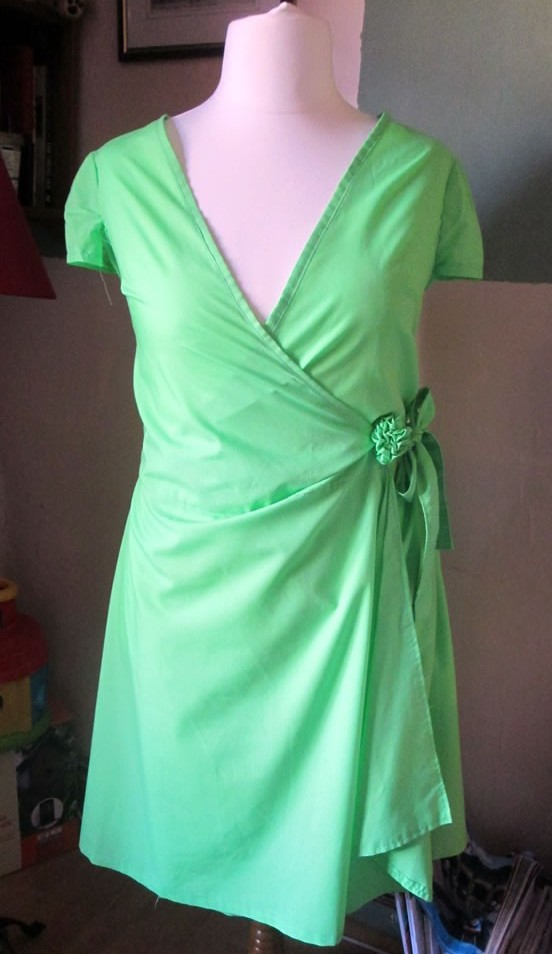
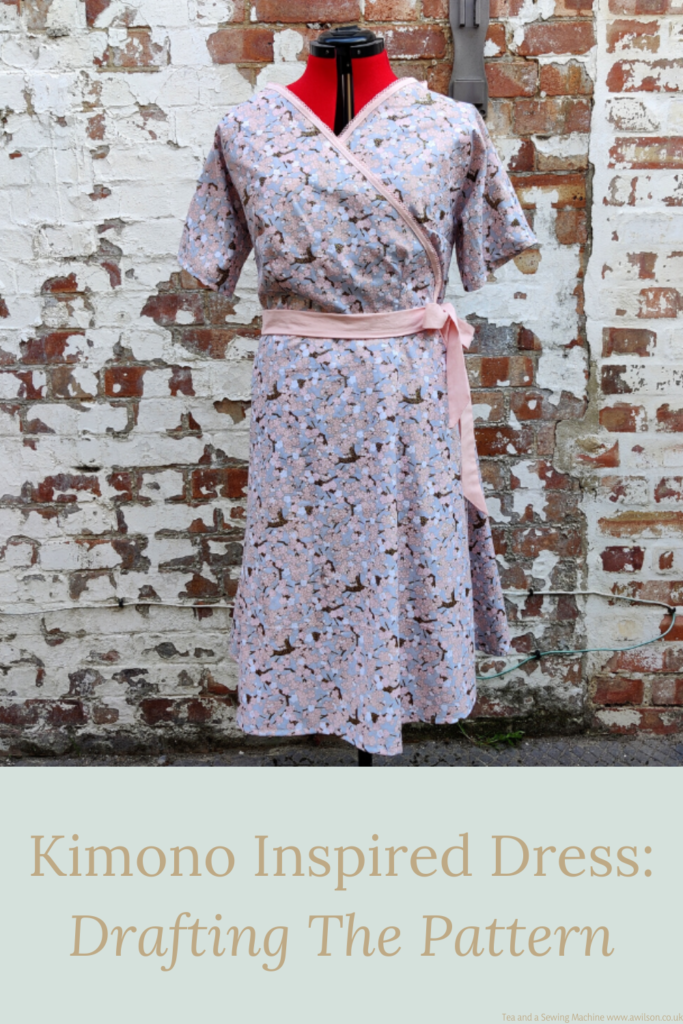

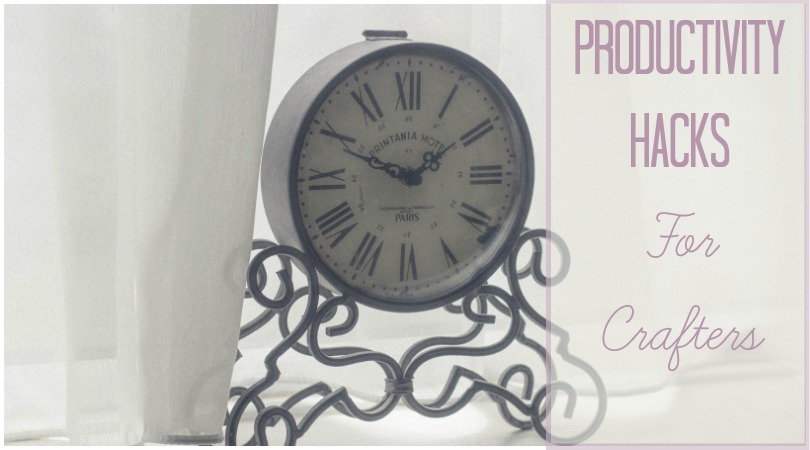

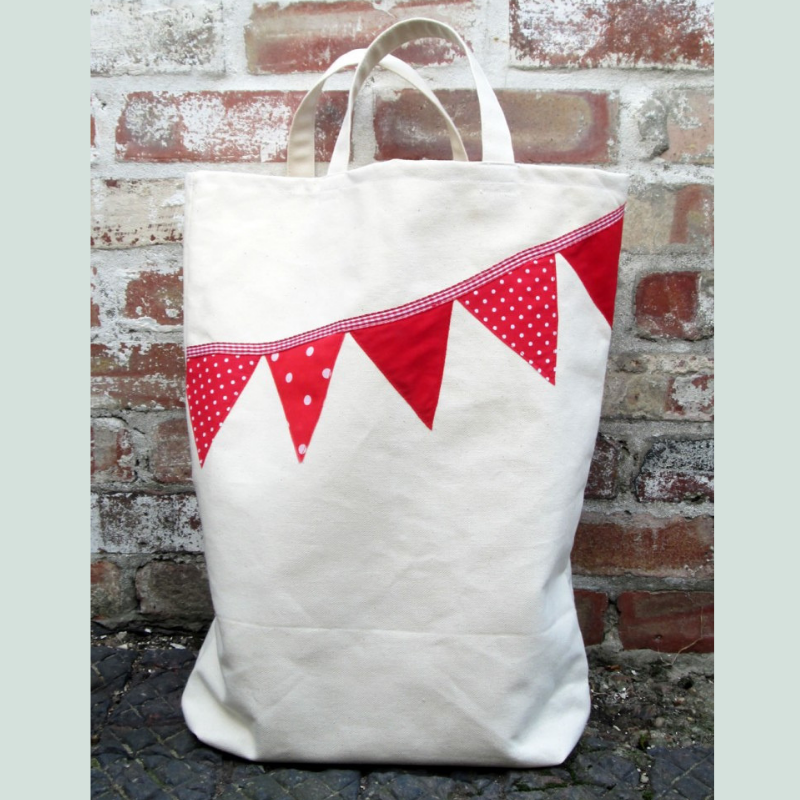
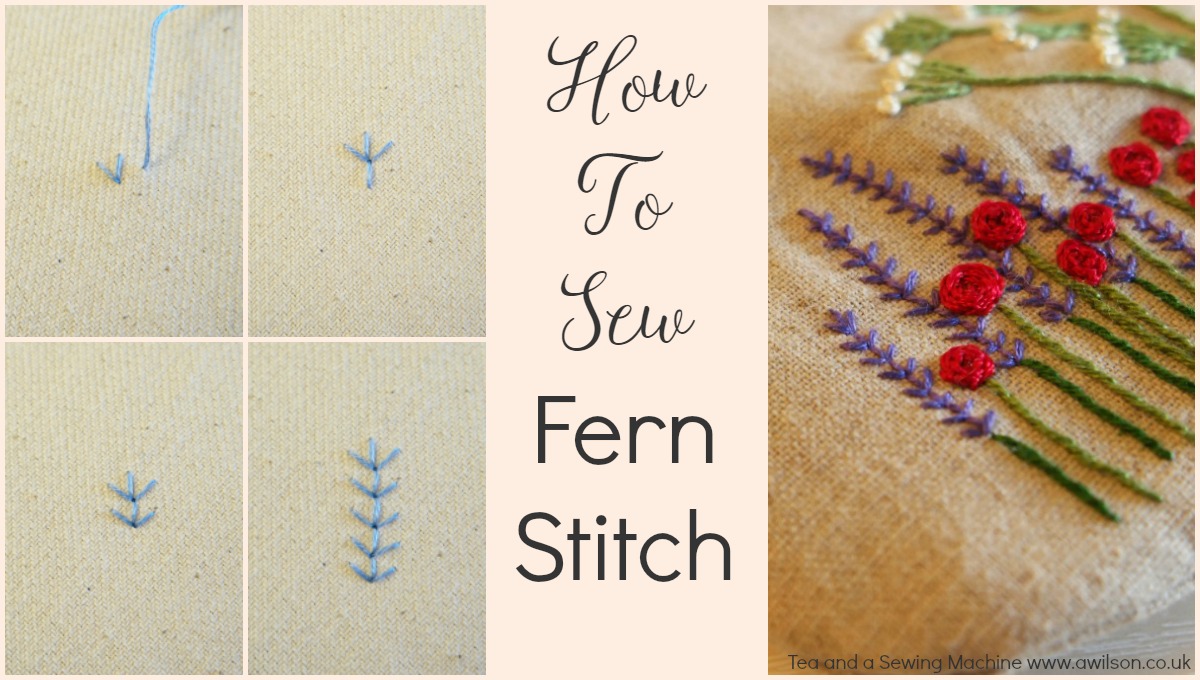

It’s so pretty, I love the pink edging. And the “belt sash thing” (technical term) is perfect with this dress!
Thank you xx